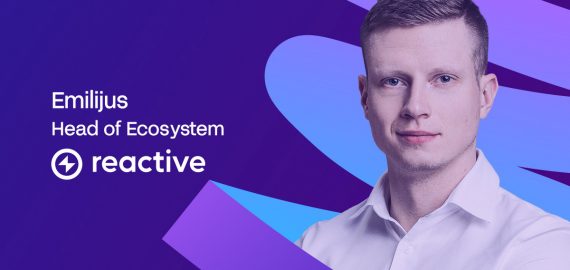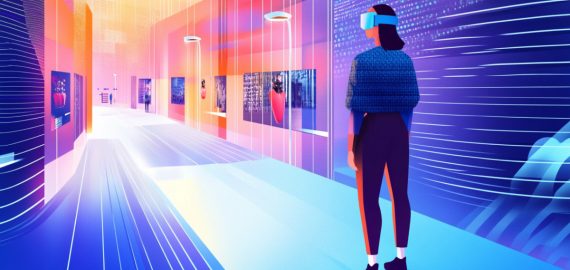How to Launch a University in Metaverse?

The metaverse is a virtual world where users can interact with each other and digital objects in a realistic and immersive environment. In recent years, the potential of the metaverse as a new platform for education has become increasingly apparent, with many universities and educational institutions exploring how they can use this technology to enhance the learning experience.

In this guide, we will explore the key steps involved in launching a university in the metaverse. Whether you’re a traditional university looking to expand into the virtual world or a new metaverse development company focused on creating virtual education experiences, this guide will provide valuable insights and best practices to help you succeed.
Understanding the Metaverse Ecosystem
The metaverse is a rapidly evolving and dynamic environment, with many players and platforms vying for dominance. It’s important to understand the key players and platforms in the metaverse and what makes each one unique. Some of the most popular metaverse platforms include Second Life, OpenSim, and Sansar, but there are many others as well.
To make an informed decision about which platform to use for your virtual university, consider the following factors:
User base and community: How many people are already using the platform and what is the community like?
Technical capabilities: Does the platform have the tools and features you need to create the kind of virtual university you envision?
Cost: What are the costs associated with using the platform, such as licensing fees, server costs, and bandwidth usage?
Integration with other tools and platforms: Can the platform be integrated with other tools and platforms that you need, such as learning management systems, virtual reality devices, and social media?
Working with a metaverse development company that has expertise in the metaverse and a track record of delivering successful virtual education projects can also be extremely helpful in navigating the ecosystem and making the right choices.
Building the University Infrastructure
Once you’ve selected the right metaverse platform for your university, the next step is to build the infrastructure. This involves creating a virtual campus design that is both functional and visually appealing, setting up virtual classrooms, libraries, and other facilities, and integrating virtual reality technology and educational tools to create a seamless and immersive learning experience.
When developing your virtual campus design, consider the following factors:
Aesthetics: What kind of look and feel do you want to create for your university?
Functionality: How will students and faculty use the virtual campus, and what facilities and services will they need?
Scalability: Will the virtual campus be able to accommodate growth over time as the university expands and evolves?
To ensure a seamless and immersive learning experience, it’s also important to integrate virtual reality technology and educational tools that support interactive and engaging learning activities. Some of the tools and technologies that can be useful include:
Virtual reality devices, such as Oculus Quest or HTC Vive, to create an immersive and interactive learning environment
Learning management systems, such as Blackboard or Moodle, to manage course content, assignments, and assessments
Interactive whiteboards, such as Zoom or Google Meet, to facilitate online collaboration and discussion
Recruiting Faculty and Students
Once you’ve established the infrastructure for your virtual university, the next step is to recruit faculty and students. This involves developing admission criteria and recruitment processes for virtual students, finding and hiring qualified virtual instructors, and building a community and fostering engagement among students and faculty.
When developing admission criteria and recruitment processes for virtual students, consider the following factors:
Academic qualifications: What are the academic
qualifications required for admission to the virtual university?
Technical requirements: What technology and hardware do students need to participate in the virtual university?
Accessibility: How will the virtual university ensure that all students, regardless of location or physical ability, have equal access to the virtual learning experience?
To find and hire qualified virtual instructors, consider the following:
Relevant experience and qualifications: What experience and qualifications do virtual instructors need to have to be successful in the virtual environment?
Teaching style and approach: How do virtual instructors approach teaching and learning in the virtual environment, and how does this align with the goals and objectives of the virtual university?
Building a community and fostering engagement among students and faculty is also an important part of the recruitment process. Consider the following:
Student activities and clubs: How will students be able to participate in clubs and activities, and what kind of support will they receive?
Faculty development and training: How will virtual instructors receive the support they need to succeed, both in terms of technical support and professional development?
Student services: What kind of student services and support will be available, such as academic advising, tutoring, and career services?
Developing and Delivering Virtual Courses
Once the virtual university is up and running, the next step is to develop and deliver virtual courses. This involves creating course content and assessments, using virtual reality and other educational technologies to support interactive and engaging learning activities, and ensuring that the virtual university meets quality and accreditation standards.
When developing course content and assessments, consider the following:
Content quality: What kind of content will be included in the virtual courses, and how will it be updated and maintained over time?
Assessment design: How will assessments be designed and delivered to ensure that students are adequately challenged and evaluated?
Feedback and evaluation: How will students receive feedback and evaluations on their performance, and what kind of support will they receive in order to improve?
Using virtual reality and other educational technologies to support interactive and engaging learning activities is also important. Consider the following:
Interactive simulations: How will virtual reality and other technologies be used to create interactive simulations and learning activities that support student engagement and learning?
Collaboration and discussion: How will students and instructors be able to collaborate and engage in discussion and debate within the virtual environment?
Gamification: How will game design principles be used to create a fun and engaging virtual learning experience for students?
Finally, ensuring that the virtual university meets quality and accreditation standards is critical. Consider the following:
Quality assurance processes: What kind of quality assurance processes will be in place to ensure that the virtual university is meeting the highest standards of quality and accreditation?
Accreditation standards: What kind of accreditation standards will the virtual university need to meet in order to be recognized as a legitimate and reputable institution?
Conclusion
In conclusion, launching a university in the metaverse is an exciting and challenging endeavor that requires careful planning, collaboration, and execution. By following the steps outlined in this guide, you can ensure that your virtual university is a success and that students and faculty have a positive and engaging virtual learning experience.
Working with a metaverse development company that has experience in creating virtual education experiences can also be a valuable asset, providing valuable insights and expertise to help you achieve your goals. Whether you’re a traditional university looking to expand into the virtual world or a new metaverse development company focused on creating cutting-edge virtual education experiences, the potential of the metaverse as a new platform for education is enormous, and the opportunities are endless.
Read more related articles:
Disclaimer
In line with the Trust Project guidelines, please note that the information provided on this page is not intended to be and should not be interpreted as legal, tax, investment, financial, or any other form of advice. It is important to only invest what you can afford to lose and to seek independent financial advice if you have any doubts. For further information, we suggest referring to the terms and conditions as well as the help and support pages provided by the issuer or advertiser. MetaversePost is committed to accurate, unbiased reporting, but market conditions are subject to change without notice.
About The Author
Damir is the team leader, product manager, and editor at Metaverse Post, covering topics such as AI/ML, AGI, LLMs, Metaverse, and Web3-related fields. His articles attract a massive audience of over a million users every month. He appears to be an expert with 10 years of experience in SEO and digital marketing. Damir has been mentioned in Mashable, Wired, Cointelegraph, The New Yorker, Inside.com, Entrepreneur, BeInCrypto, and other publications. He travels between the UAE, Turkey, Russia, and the CIS as a digital nomad. Damir earned a bachelor's degree in physics, which he believes has given him the critical thinking skills needed to be successful in the ever-changing landscape of the internet.
More articles

Damir is the team leader, product manager, and editor at Metaverse Post, covering topics such as AI/ML, AGI, LLMs, Metaverse, and Web3-related fields. His articles attract a massive audience of over a million users every month. He appears to be an expert with 10 years of experience in SEO and digital marketing. Damir has been mentioned in Mashable, Wired, Cointelegraph, The New Yorker, Inside.com, Entrepreneur, BeInCrypto, and other publications. He travels between the UAE, Turkey, Russia, and the CIS as a digital nomad. Damir earned a bachelor's degree in physics, which he believes has given him the critical thinking skills needed to be successful in the ever-changing landscape of the internet.


















































